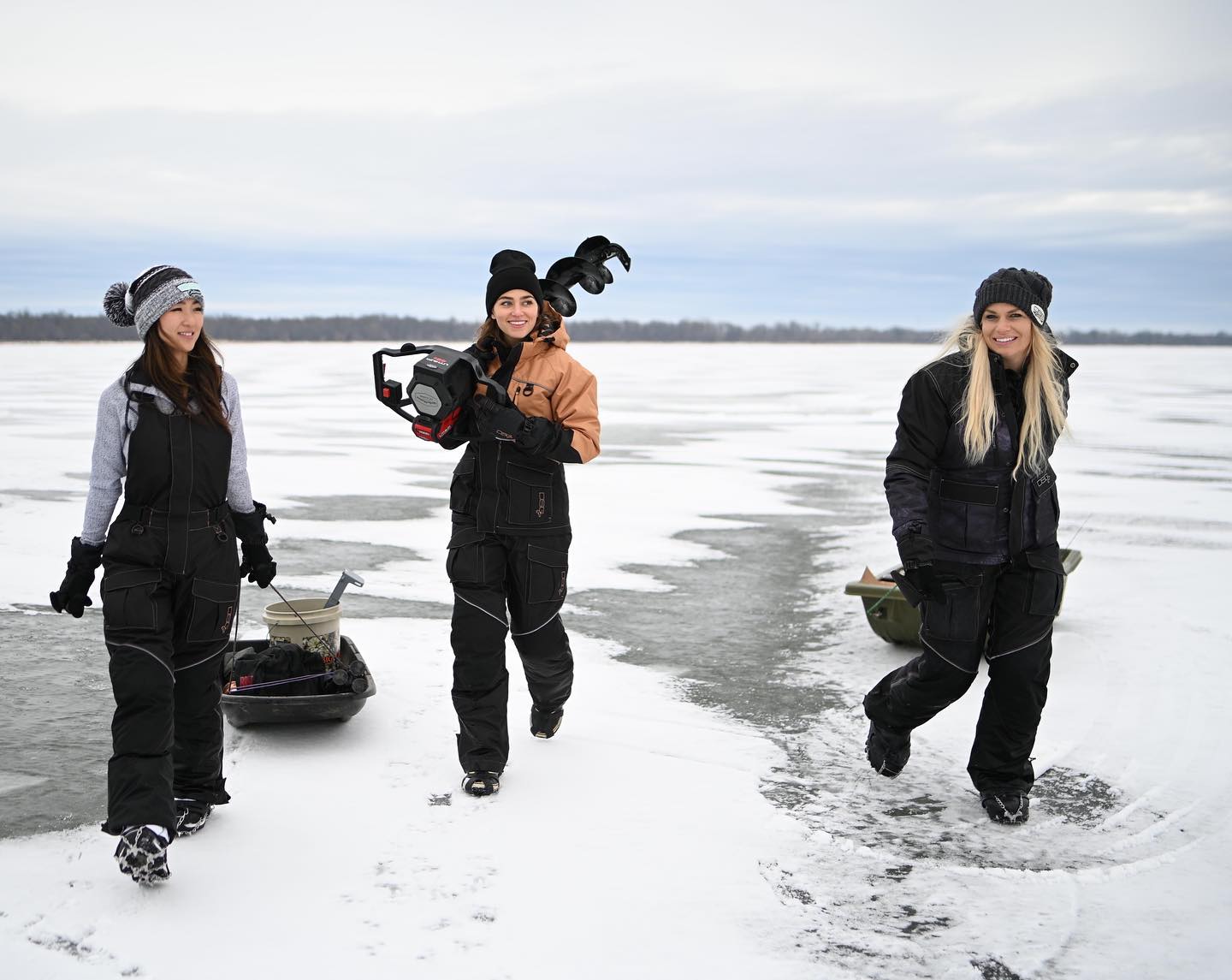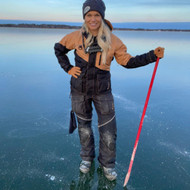Staying Safe on the Ice While Ice Fishing
Posted by Samantha Simma on Dec 19th 2021
When a local body of water freezes over, it can be hard to resist heading out for a day of ice fishing. But before you do, it's important to keep certain safety precautions in mind. Ice conditions vary greatly, and can be impacted by multiple factors, including temperature, thickness, appearance, age, snow load, etc. The more you know before you head out for a day on the ice, the more prepared you'll be to have both a successful and safe experience.
Know Before You Go
The thicker the ice is, the safer it is, but thickness cannot be entirely gauged by appearance. It's best to find out the most precise measurements of the ice, and anglers can do so multiple ways. First off, find out from local bait shops and habitual anglers what they know about the local ice conditions. From there, conduct your own measurements, as conditions may have changed, and they do so quickly!

The reason we cannot base ice conditions on appearance is because the appearance of ice is quite deceiving. While a body of water may look completely frozen over, different areas of ice on that water will experience variable ice conditions. For example, different areas on the same lake will be impacted by water depth, currents, waterfowl and fish activity, and so much more. The more you know and understand about ice and how it forms, the easier it will be for you to evaluate and predict ice conditions.
In general, hard water anglers can keep the following in mind: newer ice is stronger than old ice, and clear ice is stronger than ice that is covered in snow or has bubbles in it. Where there is a current, the ice will be thinner, as the moving water diminishes the bottom layers of ice. Get to know the body of water you're fishing, so that you can identify where the currents are (and thus these weak points). Similarly, snow-covered ice has a greater load on it and the snow acts as an insulator, warming the ice and decreasing its safety.
Before going ice fishing, make sure that someone knows your plans for the day. If possible, always fish with friends, but even then, let friends or family at home know where you plan to fish and when you plan to return. While many areas have cell phone coverage that would allow you to inform these individuals of any changes to your plans, cell phones are not always reliable in low temperatures.

Ice Measurements
Given how quickly ice conditions can change, reevaluate the ice conditions each time you head onto the ice. Ice chisels will be your tool of choice in this instance, allowing you to measure the thickness of the ice by creating a small hole. While this is the manual approach, ice augers or a drill will help you speed up these measurements.
Once you've measured the current ice thickness, abide by these gauges:
- Two inches or less: Stay off!
- Four inches: Pack light and ice fish on foot.
- Five inches: A snowmobile or ATV can safely get you out to your fishing spots.
- Eight to twelve inches: A car or small pickup can venture onto the ice.
- Twelve to fifteen inches: A medium sized truck can be driven on the ice.
Ice that is less than four inches thick should not be fished on. Meanwhile, if you've deemed the ice safe for vehicle traffic, make sure you drive that vehicle slowly on the ice and don't wear a seat belt. Without a seat belt, you can exit the vehicle in an emergency more quickly. Also, some anglers will leave the windows in their vehicles cracked, in case they need to make a quick escape. If you have multiple vehicles on the ice, make sure they're dispersed to avoid overloading one particular area of ice.

Gear You Should Get
The most enjoyable days outside are those that you are the most prepared for. Now, you have the knowledge to be safe on the ice, but do you have the appropriate ice fishing safety gear? Add to your arsenal the following safety equipment: ice claws or picks, a throw rope, life jacket, and outerwear with built-in flotation technology. Ice picks are sharp, handheld tools that will help you in case you need to self-rescue upon falling through the ice. They will allow you to grab hold of the ice, so make sure they're always in an easily accessible place on your person. A throw rope will come in handy if you're fishing with a friend who falls through the ice, and a life jacket might be worn during times when the ice conditions are highly variable (early or late season fishing).
Finally, with today's technology, what you choose to wear can be just as important as the ice fishing safety gear you carry. The DSG Outerwear Avid and Arctic Appeal jackets and bibs, for example, are all equipped with Flotex® technology. Flotex® is layered foam insulation in ice fishing clothes aimed at achieving both warmth and flotation assistance for the wearer. When both a Flotex® jacket and bibs are worn together, the flotation assistance system will improve self-rescue capabilities in the event of an emergency. Wearers should note that these fishing jackets and bibs are not Coast Guard approved.

